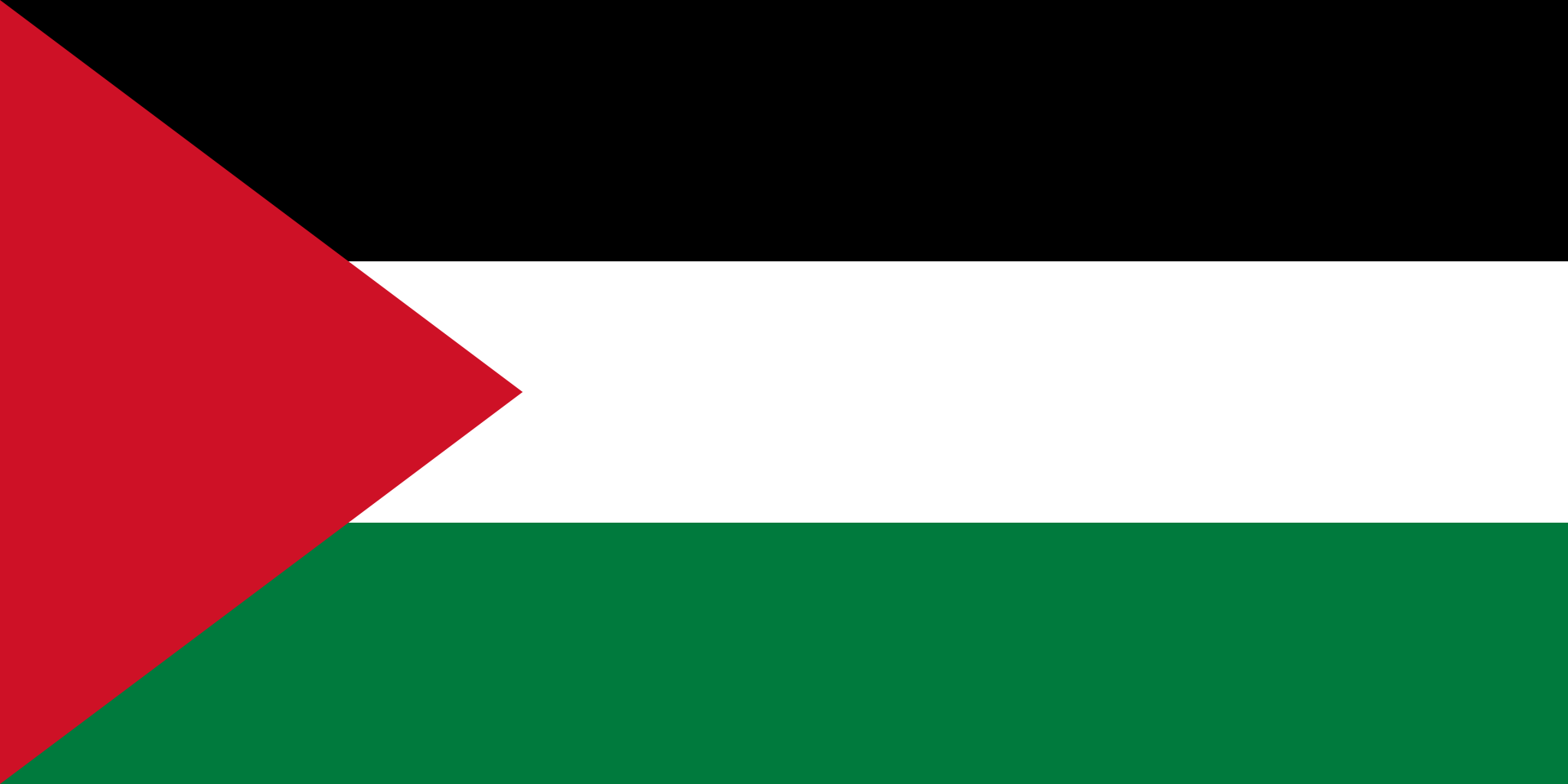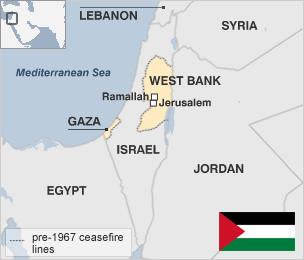Palestine is currently divided into two main territories: The West Bank, located along the northwest border of Jordan, and the Gaza Strip of land on the Mediterranean coast, northeast of Egypt. The West Bank is about 130 km long and 40-65 km wide and ranges in elevation from 400 m below sea level to 1 022 m above sea level. The Gaza Strip is a narrow strip of coastal plain 45 km long and 5- 12 km wide, divided into five governorates. Rainfall and temperatures vary according to areas and elevations within Palestine, but in general the climate is the Mediterranean, with dry and hot summers and cool and wet winters.
The two parts of the territory under the control of the Palestinian Authority, the West Bank and Gaza Strip, are not geographically contiguous and their physical separation, combined with the great difficulties in inter- and intra-connectivity between these areas and between governorates, towns, and villages makes coordination and economic exchange very difficult.
Palestinian Authority Population 2020
| 5,311,433 | Current population |
| 2,695,814 | Current male population (50.8%) |
| 2,615,619 | Current female population (49.2%) |
| Species | Admin unit | Population | Units | Number of establishments | Units |
|---|---|---|---|---|---|
| Bees | The Whole Country | 61202 | Animals | 800 | Establishments |
| Broilers | The Whole Country | 34050320 | Animals | 2439 | Establishments |
| Buffaloes | The Whole Country | 0 | Animals | 0 | Establishments |
| Camelidae | The Whole Country | 2100 | Animals | Establishments | |
| Cattle | The Whole Country | 30041 | Animals | Establishments | |
| Equidae | The Whole Country | 5000 | Animals | Establishments | |
| Goats | The Whole Country | 285920 | Animals | Establishments | |
| Layers | The Whole Country | 2072795 | Animals | 342 | Establishments |
| Other commercial poultry | The Whole Country | 515145 | Animals | 82 | Establishments |
| Sheep | The Whole Country | 610958 | Animals | Establishments | |
| Sheep/goats | The Whole Country | 800000 | Animals | 33000 | Establishments |
| Swine
|
The Whole Country
|
165
|
Animals
|
2
|
Establishments
|
Agriculture
Agriculture remains a key sector of the economy and smallholder agriculture provides a major contribution to household food security with traditional products such as olive oil, milk, cheese and vegetables. In much of the West Bank, family farms dominate the sector, especially in the western hills, with 90% of farms below 5 Ha. In the Jordan Valley, farms are relatively large, with absentee owners living in Jordan. In the Gaza Strip, there are a few large farms run by absentee owners, with the remainder being family farms. Olive trees dominate but 12% of the land is used to grow wheat and 10% to grow fruit and vegetables. About 9% of the area is used to produce feed crops.
for animals but also some tobacco. The remaining area is used mainly to produce nuts, legumes, tubers and spices. A small area is exploited for the production of cut flowers (FAO & WFP, 2004). Restricted access to fertile land, to adequate water supplies, and markets limits production and export. Wages in agriculture are lower than in any other sector of the economy, especially for women. In the first quarter of 2003, agriculture, fisheries and forestry accounted for 13% of the employed in the West Bank, 20% in the Gaza Strip and 8% in Israel and the settlements.
Livestock
livestock contributes about 45% of the gross value of agricultural production, through raising of sheep, goats, cattle, poultry and bees, particularly in parts of Central and Southern West Bank. There are concerns over the reduced capacity to control animal diseases due to restrictions on the availability of veterinary drugs and services.
Fish production derives mainly from marine catches in the Gaza Strip. In 2001-2002, the available supply of fish had declined from 2 kg to around 1 kg per capita per year, including imports. However, a small quantity of tinned fish was being distributed by UNRWA.
Plants and Animals
Adjusting to different habitats (Mediterranean, semi-arid, coastal plain) the flora & fauna are represented in all their diversity. Over 2,800 species of plants have been identified here in a comparatively small area. In the last century there were still large wooded areas, but they were sacrificed when the railway was built and wood was required for it. Today, fruit trees (olive, almond, orange, apricot …) dominate the countryside while wild species such as pine, cypress, carob, acacia, and turpentine trees are limited to certain regions (in the Galilee and on Mt. Carmel), on the edges of villages and in wadis.
The vast wild desert or semi-desert mountainous spaces are a refuge for various wildlife species of which some can be observed in the wadis in the early morning or at dusk. The Nubian ibex (Capra ibex Nubian) and the Dorcas gazelle (Gazella Dorcas) are common on the hills of the West Bank. In Wadi Araba, another gazelle (Gazella Gazella) and the rock daman (Procavia capensis), a member of the marmot family, are amongst the most numerous and accessible animals. Predators also exist here: wolves (Canis lupus) are common in uninhabited areas, panthers (Panthera pardus) make their home in the arid mountains of the South Hebron Hills, and striped hyaena (Hyaena hyaena) live near remote villages where one sometimes hears their laughing cry.
Land-based fauna is similarly quite diverse unique and rich with over 730 species including mammals, reptiles, amphibians and birds. Furthermore, because of its unique position between Africa, Asia and Europe, Palestine is considered as major grassroots for Migratory birds such as Storks and Pelicans. The Jordan Valley – Jericho and Jerusalem mountains routes are major pathways during the migration times as well as important spots for resident and breeding birds. Over 520 species of birds have been recorded in Palestine by the Wildlife society.
Climate
The climate in the Occupied Palestinian Territory is predominantly of the eastern Mediterranean type with cool and rainy winters, hot dry summers and annual rainfall in the range of 100–700 mm. … Annual rainfall varies between 300 mm in the south to 600 mm in the north.

